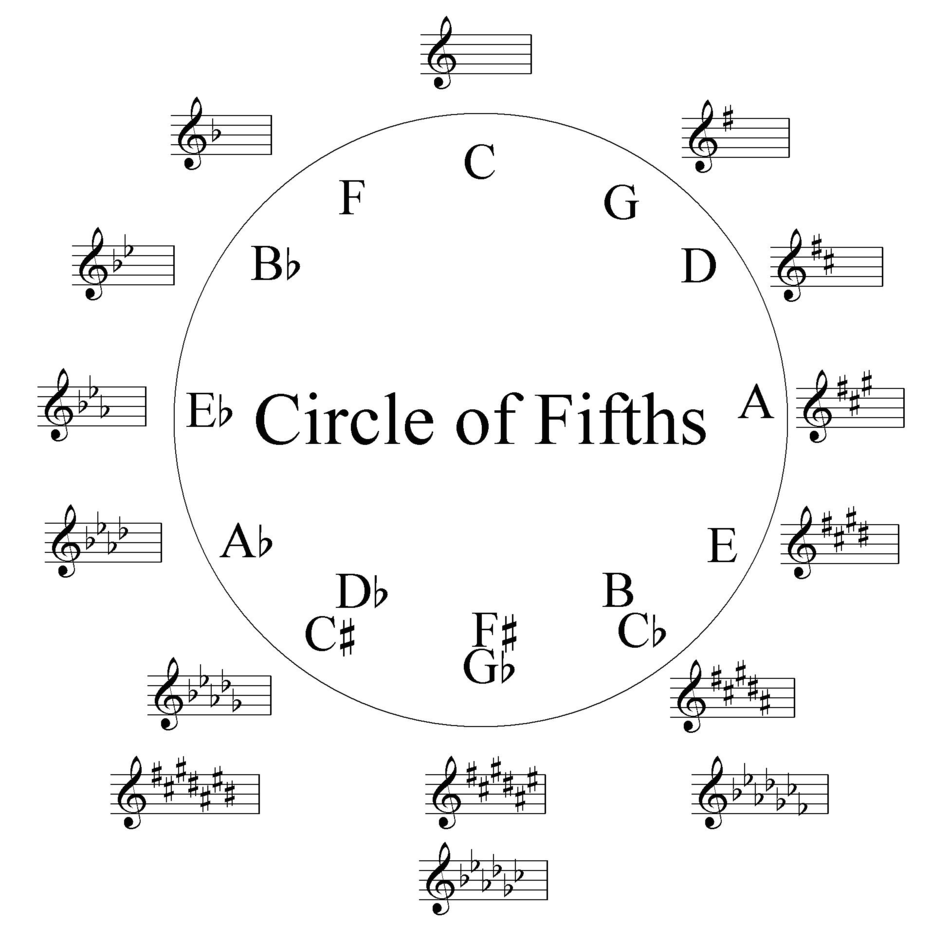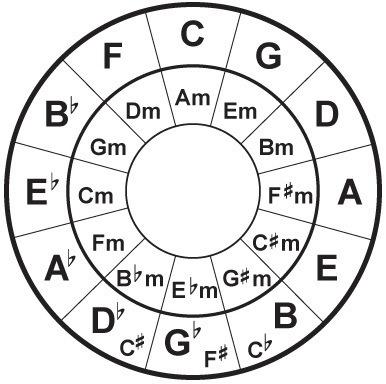The fifth circle: Talking about music in simple words

The fifth circle of keys (or the fourth-fifth circle) is a graphical diagram used by musicians to visualize the relationship between keys. In other words, this is a convenient way to organize twelve notes of the chromatic scale.
For the first time, the quarter-fifth circle was described in the book “The Idea of the Musical Grammar” from 1679 by the Russian-Ukrainian composer Nikolai Diletsky.

A page from the book, The Idea of the Musical Grammar, which depicts a fifth circle
You can start building a circle with any note, for example, before. Further, moving towards increasing the pitch, we postpone one fifth (five steps or 3.5 tones). The first fifth is pre-G, so the key in G major is followed by the key in G major. Then we add one more fifth and we get salt re. D major is the third key. Repeating this process 12 times, we will eventually return to the key in C major.
The fifth circle is called the quarter-fifth because it can also be built using quarts. If you take a note to and lower it by 2.5 tones, then we also get a note of salt.

Lines connecting sheet by a distance equal to half the pitch
Gale Grace ( Gayle Grace ) Notes, that the fifth circle allows you to calculate the number of characters in the key of a particular tonality. Each time, counting 5 steps and moving clockwise in a fifth circle, we get a tonality, the number of sharp characters in which is one more than in the previous one. The key in C major does not contain signs of alteration. The key in G major is one sharp, and in the key in C major there are seven of them.
In order to count the number of flat signs with a key, you need to move in the opposite direction, that is, counterclockwise. For example, starting from to and counting the fifth down, you will come to the key in F major, in which there is one flat sign. The next key will be in B-flat major, in which there are two flat characters with a key, and so on.
As for the minor, the minor scales identical to the major ones in terms of the number of characters in the key are parallel (major) keys. Defining them is quite simple, you just need to build a small third (1.5 tones) down from each tonic. For example, a parallel minor key for C major would be A minor.

Very often on the outside of the circle of fifths represented major keys, but on the inside - minor
Ethan Hein ( of Ethan Hein ), professor of music in the city of Montclair State University, says that the circle helps to understand the structure of Western music of different styles: classic rock, folk-rock, pop rock and jazz.
“The keys and chords that are located in a fifth circle close to each other, most Western listeners will be considered consonant . The keys in A major and D major have six identical notes in their composition, so the transition from one to another is smooth and does not cause a feeling of dissonance. A major and E flat major have only one common note, so the transition from one key to another will sound strange or even unpleasant, ”Ethan explains.
It turns out that with each step along the fifth circle in the initial scale in C major, one of the tones is replaced by another. For example, the transition from C major to the neighboring G major leads to the replacement of only one tone, and a five-step move from C major to C major leads to the replacement of five tones in the initial scale.
Thus, the closer to each other two given keys are located, the closer the degree of relationship is. According to the Rimsky-Korsakov system, if between the keys one step is the first degree of kinship, two steps are the second, three are the third. The keys of the first degree of kinship (or simply related) include those majors and minors that differ from the original key by one sign.
The second degree of kinship includes keys that are related to related keys. Similarly, the keys of the third degree of kinship are the keys of the first degree of kinship to the keys of the second degree of kinship.
It is with the degree of kinship that these two chord sequences are often used in pop music and jazz:
- E7, A7, D7, G7, C
“In jazz, key tones are most often replaced clockwise, while in rock, folk and country they are opposed,” says Ethan.
The appearance of the fifth circle was due to the fact that the musicians needed a universal scheme that would allow us to quickly identify the ratio of keys and chords. “If you understand the principle of the fifth circle, you can easily play in the chosen key - you don’t have to painfully select the right notes,” concludes Gail Grace.
